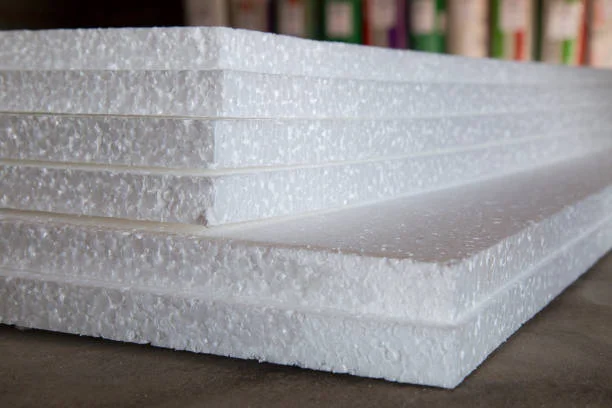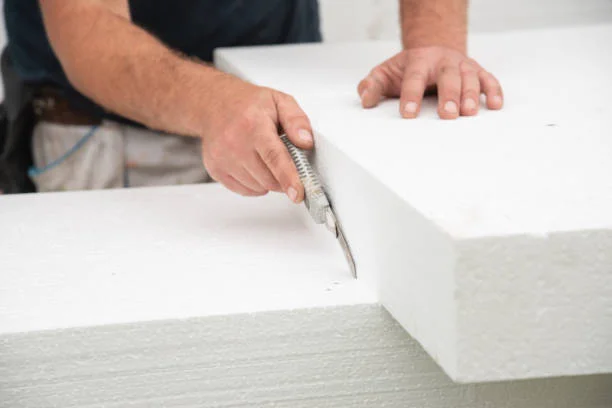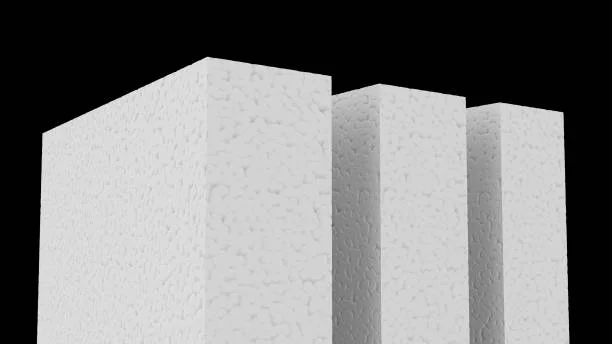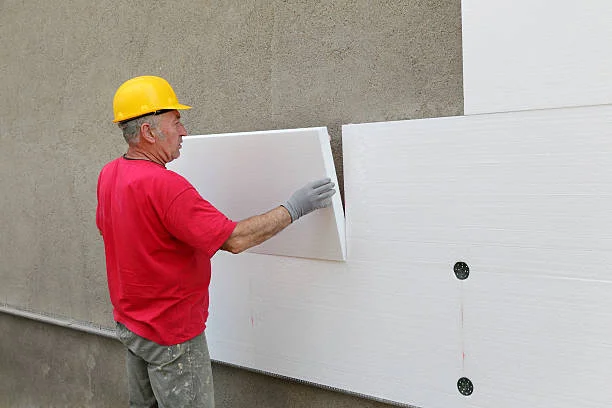When it comes to working with EPS foam board, achieving clean and precise cuts is essential for creating high-quality projects. Whether you’re building architectural models, crafting decorations, or undertaking insulation work, knowing the right techniques and tools can make all the difference.
In this blog, we’ll provides essential tips on How to Cut EPS Foam Board. Discover the best tools, techniques for precise cuts, and safety precautions. Learn to create perfect shapes with ease and confidence.
Choosing the Right EPS Foam Board

Before we delve into the cutting process, it’s crucial to select the appropriate EPS foam board for your project. EPS foam boards come in various densities and thicknesses, each suited for different applications. For lightweight and decorative projects, a lower density board might suffice. However, if you need more structural integrity or insulation properties, a higher density foam board is the way to go.
When it comes to thickness, consider the requirements of your design. Thicker boards are better for projects that need greater durability or insulation, while thinner boards are suitable for more delicate and detailed work. Additionally, make sure the foam board is free of defects, such as cracks or uneven surfaces, to ensure a smooth cutting process.
Eps Foam Cutting Tools EPS

Hot Wire Cutter
A hot wire cutter is one of the most popular tools for cutting EPS foam board. It works by heating a thin wire to a high temperature, allowing it to slice through the foam with ease. Hot wire cutters come in both manual and electric versions. Manual hot wire cutters are ideal for smaller and more intricate cuts, while electric hot wire cutters offer greater speed and power for larger projects.
Razor Blades and Utility Knives
Razor blades and utility knives can also be used for cutting EPS foam board, especially for straight lines and shallow cuts. Make sure to use sharp blades to minimize the risk of tearing or crushing the foam. For added control, attach a straightedge or ruler to guide the knife and ensure a straight cut.
Laser Cutters
If you have access to a laser cutter, it can provide extremely precise and complex cuts in EPS foam board. Laser cutters use a focused beam of light to melt and vaporize the foam, resulting in highly detailed and accurate shapes. However, laser cutters are typically more expensive and require a dedicated workspace.
Foam Cutting Saws
Foam cutting saws are specially designed with serrated blades that can handle the soft texture of EPS foam. They are useful for making curved and angled cuts, but be sure to use a slow and steady cutting motion to avoid overheating the foam.
What To Use To Cut Foam Board
There are a couple of tools you can use to cut foam board, depending on the kind of cuts you need and your budget:
- Utility knife or X-Acto knife: This is the simplest and most affordable option. A sharp blade will give you clean, straight cuts. For best results, use a metal straight edge to guide your knife as you cut [How To Cut Foam Board for a Clean Finish].
- Hot wire foam cutter: This is a great option for making curved cuts or cutting out intricate shapes. The wire heats up and melts through the foam, so there’s no dust or mess. However, hot wire cutters can be more expensive than knives, and they can be tricky to use if you’re not careful [Neilson HOT Wire Foam Cutter 9.6W 3 in 1 Multi-Purpose].
- Electric foam cutter: This is a more powerful option that can handle thicker foam boards. It’s similar to a hot wire cutter, but it uses a blade instead of a wire. Electric foam cutters are the most expensive option, but they can be a good choice if you need to do a lot of foam cutting [Warrior Cordless Power Cutter].
How to Cut EPS Foam Board?

Straight Cuts
Straight cuts are fundamental and often the starting point for many projects. To achieve precise straight cuts, a combination of the right tools and techniques is essential.
When using a utility knife or a razor blade, start by marking the cutting line clearly on the EPS foam board using a pencil or a marker. Place a straightedge, such as a metal ruler or a long, flat piece of wood, along the marked line. Firmly hold the straightedge in place to prevent it from moving during the cutting process. Make a shallow initial incision along the marked line with the utility knife or razor blade. This helps to guide the subsequent cuts and ensures a straighter path.
Now, holding the knife at a 90-degree angle to the foam surface, apply gentle but consistent pressure and make a smooth, continuous cut. Avoid applying too much force all at once, as this can cause the foam to tear or the blade to veer off the line. Move the knife steadily along the straightedge, taking care to keep the cut as straight as possible.
If you’re using a hot wire cutter for straight cuts, the process is somewhat different but equally effective. First, shape the hot wire into a straight configuration. You can do this by adjusting the position of the wire on the cutter or using attachments provided with the tool. Position the hot wire at the starting point of the marked line and slowly move it along the line, maintaining a constant speed and pressure. The heat from the wire will melt through the foam, creating a clean and straight cut.
Curved Cuts
Curved cuts add an element of elegance and complexity to your projects. Working with curves requires a bit more finesse and the right choice of tool.
For gentle curves, a hot wire cutter is again a great option. Imagine the curve you want to create and shape the hot wire accordingly. You might need to bend it slightly to match the curvature. Start the cut at one end of the curve and gradually guide the hot wire along the desired path. The key is to move the wire smoothly and steadily, allowing the heat to do the cutting work without jerking or rushing.
For more pronounced or complex curves, a foam cutting saw can come in handy. The serrated blade of the saw is designed to handle the foam material. However, it’s important to use a slow and controlled cutting motion. Start the cut on the outer edge of the curve and gradually work your way inwards. Take your time and let the saw do the work; forcing the saw too quickly can result in uneven or jagged edges.
Complex Shapes and Patterns
Complex shapes and patterns require a combination of tools and a strategic approach. Begin by carefully outlining the shape or pattern on the EPS foam board using a fine-point marker or a pencil. This outline will serve as your guide throughout the cutting process.
For the main cuts of complex shapes, a hot wire cutter or a laser cutter can provide accuracy and efficiency. Use the hot wire cutter as described earlier, adjusting the wire shape and movement to follow the contours of the design. If you have access to a laser cutter, upload your design or pattern to the machine and let it do the precise cutting.
After the main cuts are made, you might need to refine the edges and details using a utility knife or a razor blade. Pay close attention to the smaller elements and use gentle, controlled strokes to shape and smooth the edges. It’s often helpful to make several light cuts rather than one forceful one to achieve a more refined finish.
How to Cut EPS Foam Board? The best way to cut EPS foam depends on the shape and complexity of your project. Straight cuts can be achieved effectively with a utility knife and a straightedge or a hot wire cutter. Curved cuts often benefit from a hot wire cutter for gentle curves and a foam cutting saw for more pronounced ones. For complex shapes and patterns, a combination of hot wire or laser cutters for the main cuts and utility knives or razor blades for detailing is the ideal approach. Remember, patience, practice, and the right tools are key to achieving clean and precise cuts in EPS foam.
Safety Precautions

While cutting EPS foam board can be a fun and rewarding activity, it’s important to take safety precautions to avoid injuries. Always wear protective eyewear to shield your eyes from flying debris. If using a hot wire cutter or laser cutter, be sure to follow the manufacturer’s instructions and use the appropriate safety gear, such as heat-resistant gloves.
In addition, work in a well-ventilated area to avoid inhaling any fumes or particles released during the cutting process. Keep flammable materials away from the cutting area, as EPS foam is highly flammable.
Tips for a Smooth Cutting Experience
Mark and Measure Accurately
Before making any cuts, take the time to mark and measure the foam board precisely. This will help ensure that your cuts are in the right place and the final piece fits your project requirements perfectly.
Keep the Cutting Area Clean
Remove any debris or loose pieces of foam from the cutting area to prevent them from interfering with the cut and causing uneven results.
Experiment and Practice
Don’t be afraid to experiment with different tools and techniques on scrap pieces of foam board to find the methods that work best for you. With a little practice, you’ll be cutting EPS foam board like a pro in no time.
In conclusion, cutting EPS foam board like a pro is all about having the right tools, techniques, and a bit of patience. By following the tips and guidelines outlined in this blog, you’ll be well on your way to creating beautiful and precise projects with ease. So, grab your tools and let your creativity flow!
Conclusion

This article focuses on how to cut EPS foam board like a pro. It starts with choosing the right foam board. Key tools like hot wire cutters, utility knives, and more are introduced. Different cutting techniques for straight, curved, and complex shapes are explained. Safety precautions are emphasized. Tips for a smooth process are given. In short, with the right knowledge and practice, one can master cutting EPS foam board precisely.
